Photo Album: Armenia, September 2015
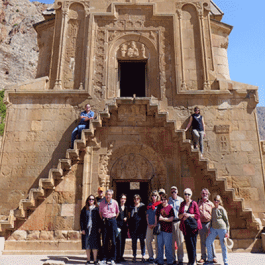
Armenia, September 2015
90 images
HALI editorial staff Ben Evans and Rachel Meek joined thirteen participants as Vladimir Grigoryan and Tatev Muradyan guided the group to rugs, textiles and historical sites in Armenia for 7 days (with 24 hours in Georgia)
- View of Mount Ararat from the Cascade Complex, Yerevan, Armenia
- Ben Evans and Paul Ramsey look at rugs and fragments on offer in the Vernissage Market, Yerevan, Armenia
- Vernissage Market, Yerevan, Armenia
- The Temple of Garni, a reconstructed Hellenistic building and symbol of pre-Christian Armenia, Kotayk Province, Armenia
- The Mesrop Mashtots Institute of Ancient Manuscripts (AKA The Matenadaran), Yerevan, Armenia. Named after the early medieval linguist, theologian and inventor of the Armenian alphabet
- Ecclesiastical vestments and Armenian priests’ staffs with ivory double headed dragon finials, Collection of the Holy Mother See, Etchmiadzin, Armenia
- Tatev Muradyan presents an Armenian embroidery in the museum at the Holy Mother See, Etchmiadzin, Armenia
- Holy Mother See, Etchmiadzin, Armenia
- Resist dyed indigo altercloth, made in India for the Armenian Church, Holy Mother See, Etchmiadzin, Armenia
- Resist dyed indigo altercloth, made in India for the Armenian Church (detail), Holy Mother See, Etchmiadzin, Armenia
- Indian chintz made for the Armenian church (detail), dated 1709, Holy Mother See, Etchmiadzin, Armenia
- Indian chintz made for the Armenian church (detail), dated 1709, Holy Mother See, Etchmiadzin, Armenia
- Embroidery, Holy Mother See, Etchmiadzin, Armenia
- Resist dyed cotton altar hanging (detail), made in India for the Armenian church, 18th century, Holy Mother See, Etchmiadzin, Armenia
- Resist dyed cotton altar hanging (detail), made in India for the Armenian church, 18th century, Holy Mother See, Etchmiadzin, Armenia
- Resist dyed cotton altar hanging (detail), made in India for the Armenian church, 18th century, Holy Mother See, Etchmiadzin, Armenia
- ‘Chondzoresk Chelaberd’, Holy Mother See, Etchmiadzin, Armenia
- Lunch at Sardarapat, Armenia
- Views of Mount Ararat from Sardarapat, Armenia
- Vishap dragon stone, Sardarapat, Armenia
- Lace with a repeating Armenian eternity symbol motif, Museum of Sardarapat, Armenia
- Armenian Needlework, Museum of Sardarapat, Armenia
- Armenian Needlework, Museum of Sardarapat, Armenia
- Dragon rug (detail), 17th century, Museum of Sardarapat, Armenia
- Artur Telfeyan and Ben Evans discuss a 17th century Dragon rug, Museum of Sardarapat, Armenia
- The HALI Tour get a close look at a 17th century Dragon rug, Museum of Sardarapat, Armenia
- Museum of Sardarapat, Armenia
- Interior of the Museum of Sardarapat designed by Rafael Israelyan, 1968, Armenia
- Tatev Murdyan demonstrates weaving at Megerian Carpets, Yerevan, Armenia
- Soviet safety posters at Megerian Carpets, Yerevan, Armenia
- Southwest Caucasian embroidery, 18th century, National History Museum of Armenia, Yerevan
- Stop off at a rural house for local honey tasting, Vyots Dzor region, Armenia
- The HALI Tour group at a unique two-storey church, 13th – 14th century, Noravank Monastery, Armenia
- Stone carving showing geometric interlacery, Noravank Monastery, Armenia
- Carvings by the 13th century architect, sculptor and illustrator Momik, St. Karapet church, Noravank Monastery, Armenia. The top panel shows a rare depiction of the Father God, the lower shows the Virgin and Child seated upon a carpet
- Noravank Monastery, Armenia
- Caucasian Leopard on a Royal tombstone, Noravank Monastery, Armenia
- Medieval Jewish Cemetery with tombstones discovered and excavated in 1996, Yegheghis Gorge, Armenia
- Medieval Jewish tombstone with the Armenian eternity symbol ans inscriptions in Aramaic and Hebrew, Yegheghis Gorge, Armenia
- CILICIA, a replica 13th century sailing vessel currently in dry dock for repairs, Lake Sevan, Armenia
- Captain of CILICIA, Karen Balayan on the shore of Lake Sevan
- Investigating repairs to the CILICIA
- Ben Evans and Joss Graham aboard CILICIA
- A cooking tutorial using fresh lake fish at the guesthouse of Chef Yura Sargsyan, Lake Sevan, Armenia
- Chef Yura Sargsyan, Tour Guide Vladimir Grigoryan, Captain of CILICIA Karen Balayan and HALI Tour driver Sargis
- Looking at pictorial motifs on one of the oldest tombstones in Noradouz Cemetery, Armenia
- Khachkar stone crosses, Noradouz Cemetery, Armenia
- Ben Evans asks a lady selling handicrafts if any of the rugs shown in Oriental Rugs Vol 1 by Ian Bennett are familiar designs, Noradouz, Armenia
- The group meet a lady selling handicrafts and ask if any of the rugs shown in Oriental Rugs Vol 1 by Ian Bennett are familiar designs, Noradouz, Armenia
- Ceramic salt cellar on a Kazak kelim, Museum of Ethnography & Carpets, Gavar, Armenia
- Salt bag, Museum of Ethnography & Carpets, Gavar, Armenia
- Room set showing use of felt and rugs in an early 20th century rural Armenian home, Museum of Ethnography & Carpets, Gavar, Armenia
- Photograph, 19th century, Museum of Ethnography & Carpets, Gavar, Armenia
- Sunset lake cruise with beers and crayfish on a chilly Lake Sevan, Armenia
- Alpine style wooden buildings, Dilijan, Tavush province, Armenia
- Haghpat Monastery (meaning ‘smooth walls’), Lori region, Armenia
- Haghpat Monastery (meaning ‘smooth walls’), Lori region, Armenia
- Carvings of crosses – ubiquitous in Armenia, Haghpat Monastery, Armenia
- Khachkar stone cross (detail), Haghpat Monastery, Armenia
- Tombstone with a motif that resembles those found on ‘Sevan’ Caucasian rugs, Haghpat Monastery, Armenia
- Royal tombs, Haghpat Monastery, Armenia
- Panorama from the terrace of Kopala Restaurant, Tbilisi, Georgia
- Street art, Tbilisi, Georgia
- Handpainted page from a 19th century portfolio of Caucasian rug designs
- State Museum of Folk and Applied Arts, Tbilisi, Georgia
- State Museum of Folk and Applied Arts, Tbilisi, Georgia
- State Museum of Folk and Applied Arts, Tbilisi, Georgia
- State Museum of Folk and Applied Arts, Tbilisi, Georgia
- Embroidered folk costumes (detail), State Museum of Folk and Applied Arts, Tbilisi, Georgia
- Embroidered folk costumes (detail), State Museum of Folk and Applied Arts, Tbilisi, Georgia
- Performance by traditional Armenian music group at the Folk Art Museum, Yerevan, Armenia
- Needlework depicting bees exploring a garden, Folk Art Museum, Yerevan, Armenia
- Needlework, Folk Art Museum, Yerevan, Armenia
- Lacework, Folk Art Museum, Yerevan, Armenia
- Folk Art Museum, Yerevan, Armenia
- Folk Art Museum, Yerevan, Armenia
- Caucasian embroidery (detail), 18th century. Silk embroidered in cross stitch. Collection of the Carpet Museum, Shushi, Republic of Nagorno-Karabakh, seen at the Folk Art Museum, Yerevan, Armenia (see p. 97 HALI 179)
- Ben Evans, Tatev Muradyan and Levon der Bedrossian at his Folk Art Hub Foundation at the Silk Road Hotel, Yerevan, Armenia
- Painting, Folk Art Hub Foundation at the Silk Road Hotel, Yerevan, Armenia
- Flatwoven storage bag, Folk Art Hub Foundation at the Silk Road Hotel, Yerevan, Armenia
- Tatev Muradyan, curators and guests at the special textile exhibition, Folk Art Museum, Yerevan, Armenia
- Farewell reception at the Silk Road Hotel, Yerevan, Armenia
- Making lavash flatbread at the farewell reception, Silk Road Hotel, Yerevan, Armenia
- Lowering fish into a tonir underground oven at the farewell reception, Silk Road Hotel, Yerevan, Armenia
- Farewell reception at the Silk Road Hotel, Yerevan, Armenia
- Farewell reception at the Silk Road Hotel, Yerevan, Armenia
- Farewell meal at the Silk Road Hotel, Yerevan, Armenia
- Farewell meal at the Silk Road Hotel, Yerevan, Armenia
- Tatev Muradyan distributes farewell gifts at the Silk Road Hotel, Yerevan, Armenia
- The HALI Tour group, Armenia, September 2015
HALI editorial staff Ben Evans and Rachel Meek joined thirteen participants as Vladimir Grigoryan and Tatev Muradyan guided the group to rugs, textiles and historical sites in Armenia for 7 days (with 24 hours in Georgia). Another HALI Tour to Armenia and Georgia is planned for May 2016. To register your interest or join the HALI Tours mailing list contact [email protected]
Beginning in the capital of Armenia, Yerevan, the tour took in the rich history the many civilisations to have inhabited the region with a tour of archeological finds, carpets and the wide ranging folk costumes and embroideries at the National History Museum of Armenia. Ancient manuscripts at the Matenadaran Museum demonstrated the complex decorative language of Armenia: the world’s first country to adopt Christianity as the official religion. Professor Levon Chugazyan granted the group special access to the stores to view a selection of medieval books with precious scraps of Sassanian and Indian fabric used in the bindings.
A short drive out of the city brought us to the Mother See of Holy Etchmiadzin with an impressive collection of 18th century cotton alter cloths made in India for the Armenian Church (article to follow in HALI 186), embroideries and Caucasian rugs. The museum on the site of the Sardarapat Memorial complex provided the opportunity to get a close up look at a 17th century Dragon carpet and more little known folk costumes.
Travelling out of the city offered fresh mountain air, local honey, entry into the Areni-1 cave which contains huge ceramic vats in the process of excavation – these provide evidence of the world’s earliest known winery. Exquisite stone carving akin to the designs seen in Matenadaran manuscripts were seen at multiple locations – in early Christian places of worship at Khor Virap, Noravank and Haghpat Monasteries; on khachar stones at Noradouz cemetary; at a Jewish cemetery at the head of Yegheghis Gorge; and within the Orbelian Caravanserai at the top of a mountain pass – the building would have offered shelter to travellers and merchants of multiple faiths along the trade route.
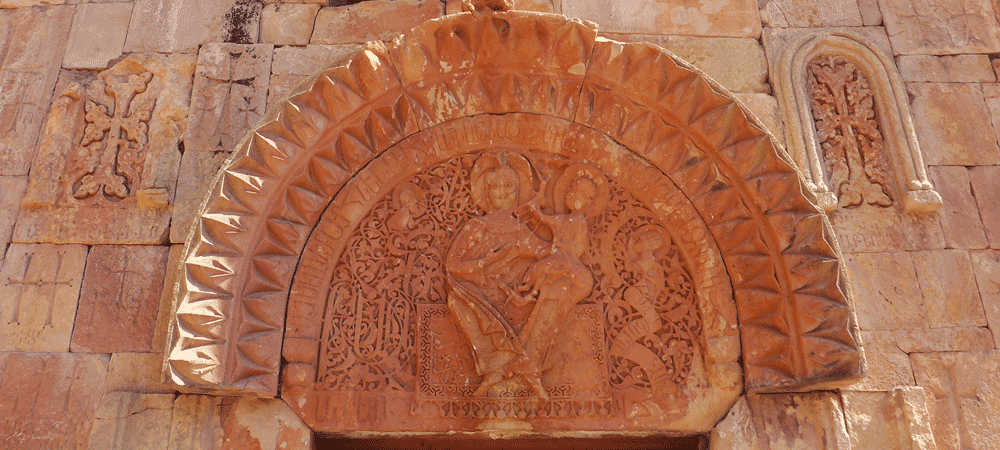
Carving by the 13th century architect, sculptor and illustrator Momik, St. Karapet church, Noravank Monastery, Armenia.

Medieval Jewish tombstone with the Armenian eternity symbol ans inscriptions in Aramaic and Hebrew, Yegheghis Gorge, Armenia
Karen Balayan, Captain of CILICIA sailing introduced the group to his thirty year labour of love. Currently in the dry dock for repairs on the shores of Lake Sevan, only 13th century methods and materials have been employed to build a replica of an Armenian merchant ship of the period and to sail it across Europe. Chef Yura Sargsyan provided a cookery demonstration using local fish before lunch at his guesthouse and an encounter with women selling knitted handicrafts at Noradouz Cemetery offered a special chance to chat about the history of weaving in Armenia with the visual aid of carpet literature from the HALI bus library. 19th century photographs and room sets provided a rare contextual reference of carpet use in Armenia at the Museum of Ethnography & Carpets in Gavar.
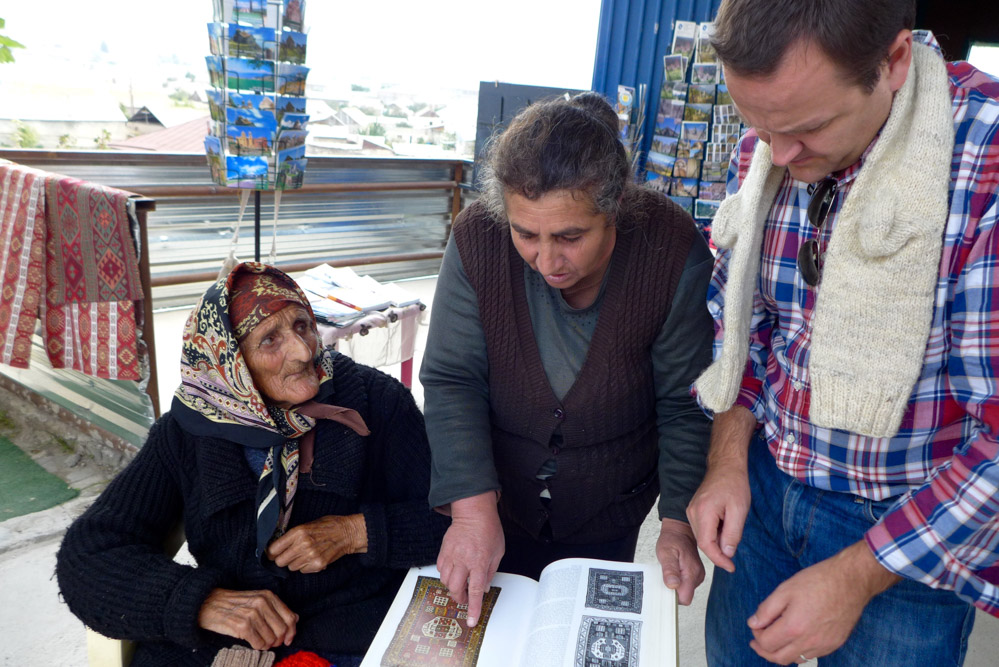
Ben Evans asks a lady selling handicrafts if any of the rugs shown in Oriental Rugs Vol 1 by Ian Bennett are familiar designs, Noradouz, Armenia
With just 24 hours in Georgia, a taste of Tbilisi brought an evening walking tour with interludes to rummage through the back room contents of carpet shops. Dr Irena Koshoridze, Caucasian kelim expert and Curator of the State Museum of Folk and Applied Arts, provided a personal tour of the imaginative exhibitions in the brand new museum before taking the group to see Qajar paintings and ancient goldwork in the treasury at the Georgian National Museum.
Further shopping opportunities were found at the Dry Bridge Antiques Market in Tbilisi and the Vernissage Market (conveniently placed right outside the hotel) in Yerevan. Additional luggage purchases were required.

Ben Evans and Paul Ramsey look at rugs and fragments on offer in the Vernissage Market, Yerevan, Armenia
A farewell reception at the Folk Art Museum in Yerevan brought together all of the Armenian curators who had welcomed the HALI Tour group, and incorporated a special exhibition of textiles and a performance of medieval Armenian music. Levon der Bedrossian of the Armenian Rugs Society hosted a generous traditional lunch in the garden of his Silk Road Hotel which also houses the Folk Art Hub Foundation which aims to educate and promote Armenian textile and weaving heritage. Embroidery demonstrations and a tour of the carpet repair facilities with views across to Mount Ararat brought the HALI Tour Armenia to a close.

Caucasian embroidery (detail), 18th century. Silk embroidered in cross stitch. Collection of the Carpet Museum, Shusha, Nagorno-Karabakh, seen at the Folk Art Museum, Yerevan, Armenia (see p. 97, HALI 179)



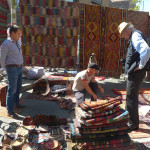
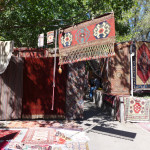



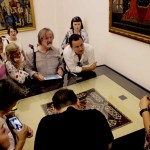
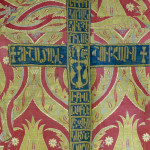
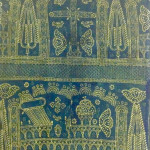
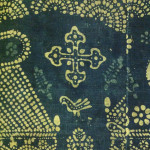
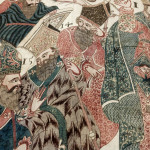
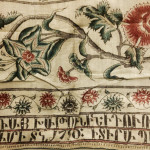
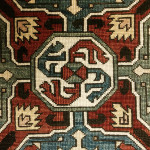


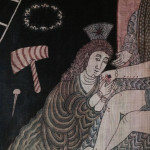



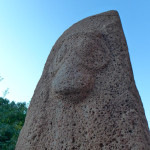
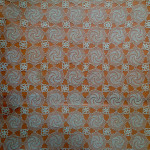
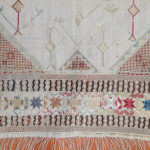
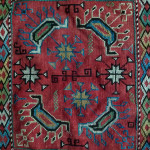

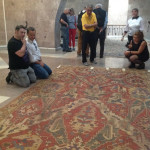

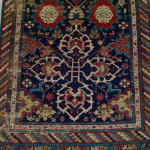
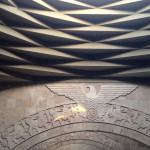
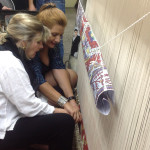
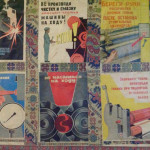
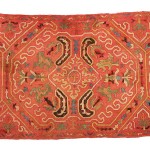

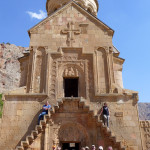
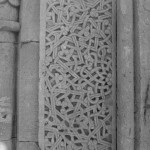
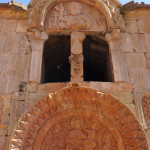

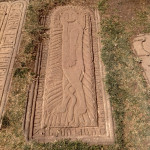
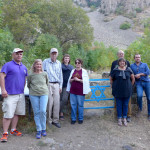

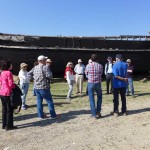

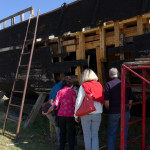
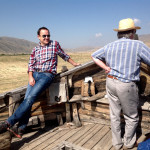


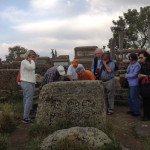
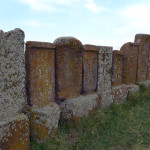
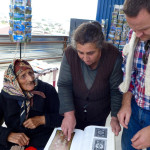
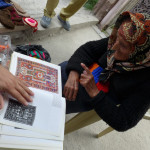
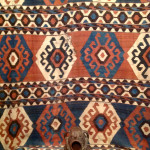
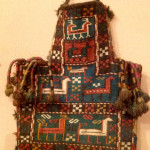
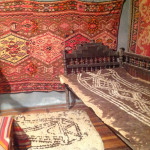
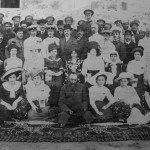

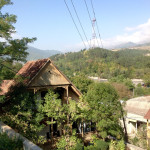
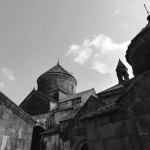
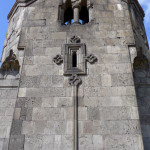
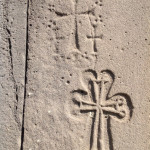
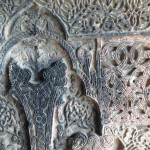
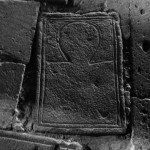

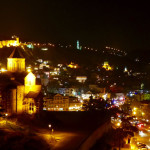
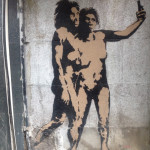
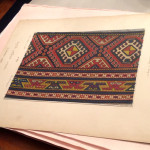
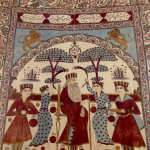
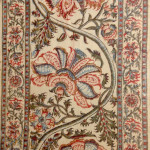
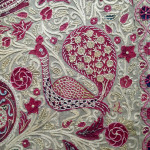
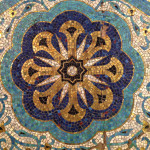
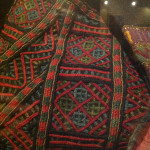
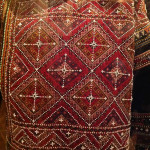




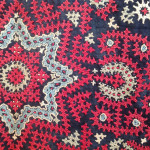
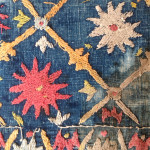
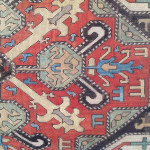

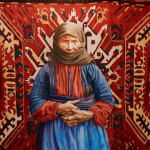

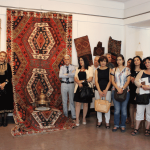
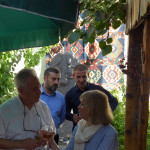
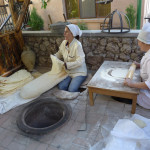
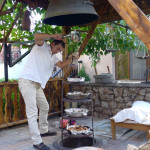

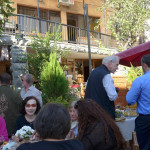
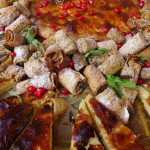




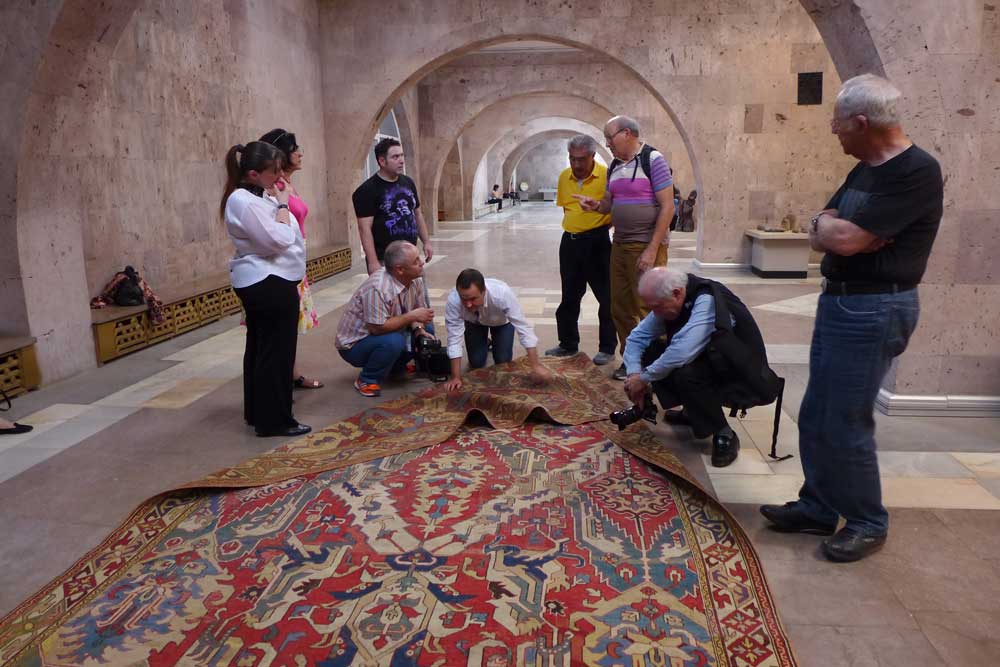
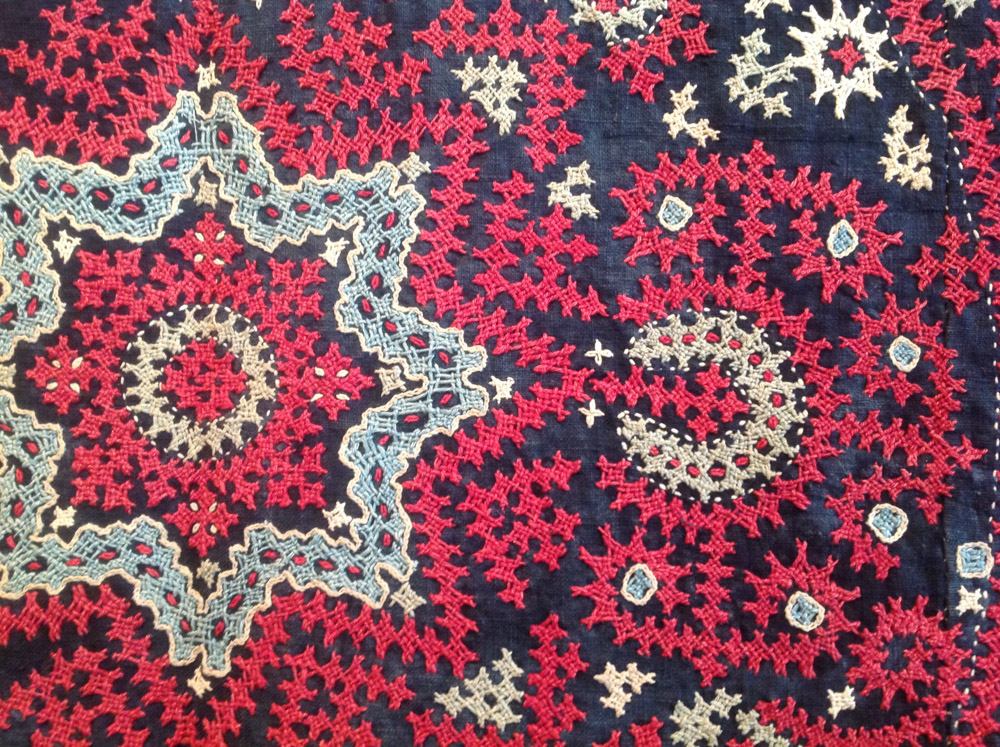








Comments [0] Sign in to comment